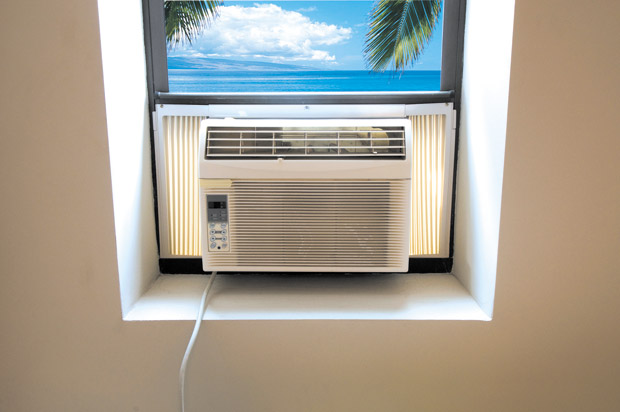The window air-conditioning unit in my master bedroom just stopped working. Perfect timing, with all the heat, humidity and lack of trades in the forecast. This wasn’t something that my husband and I could wait on. We needed a new unit, and we needed it right away.
The very next day, we went shopping. I had looked up some information on window units before, so I thought that I was well prepared. We bought a unit with the appropriate energy load and cooling capacity, but when we tried to install it, the unit didn’t fit. Rookie mistake.
If you are in the market for a new window A/C unit, start by choosing a good location for installation. Make sure there is an outlet nearby. Then, measure inside the frame of the window, both height and width, and write down your measurements before you leave.
Next, measure the room. Take the room length and multiply it by the width. This will give you the square footage. Approximations are OK, as long as they are close. This number will help you to decide on the cooling capacity you will need, often measured using a BTU (British Thermal Units) rating. According to Consumer Reports, an air conditioner needs about 20 BTU per square foot. However, they also recommend adjusting for ceiling height, amount of shade or sun the room typically gets, the number of people typically occupying the space, and whether it will be used in a kitchen.
Check the ENERGY STAR® guidelines for BTUs per hour and the room’s square footage as a starting point:
Don’t assume that bigger is always better. An air-conditioning unit that is too large may be less effective at removing humidity from a room. An A/C unit needs to cycle for a long enough period of time for moisture to condense on the coils and drain away. However, an oversized unit provides quick bursts of cold air, which results in shorter cycles and reduces the amount of condensation that can drain off the coils, according to ENERGY STAR®.
Consider extra, convenience features you would like to have. For us, my minimum requirements were a remote control and ENERGY STAR® rating. Other optional features include a programmable timer, which will allow you to set the unit to turn off and on at specific times, and an electronic ionizer, which purifies the air as it runs.
Have a comment or question for Joanne? Email thefixisinhawaii@gmail.com.


